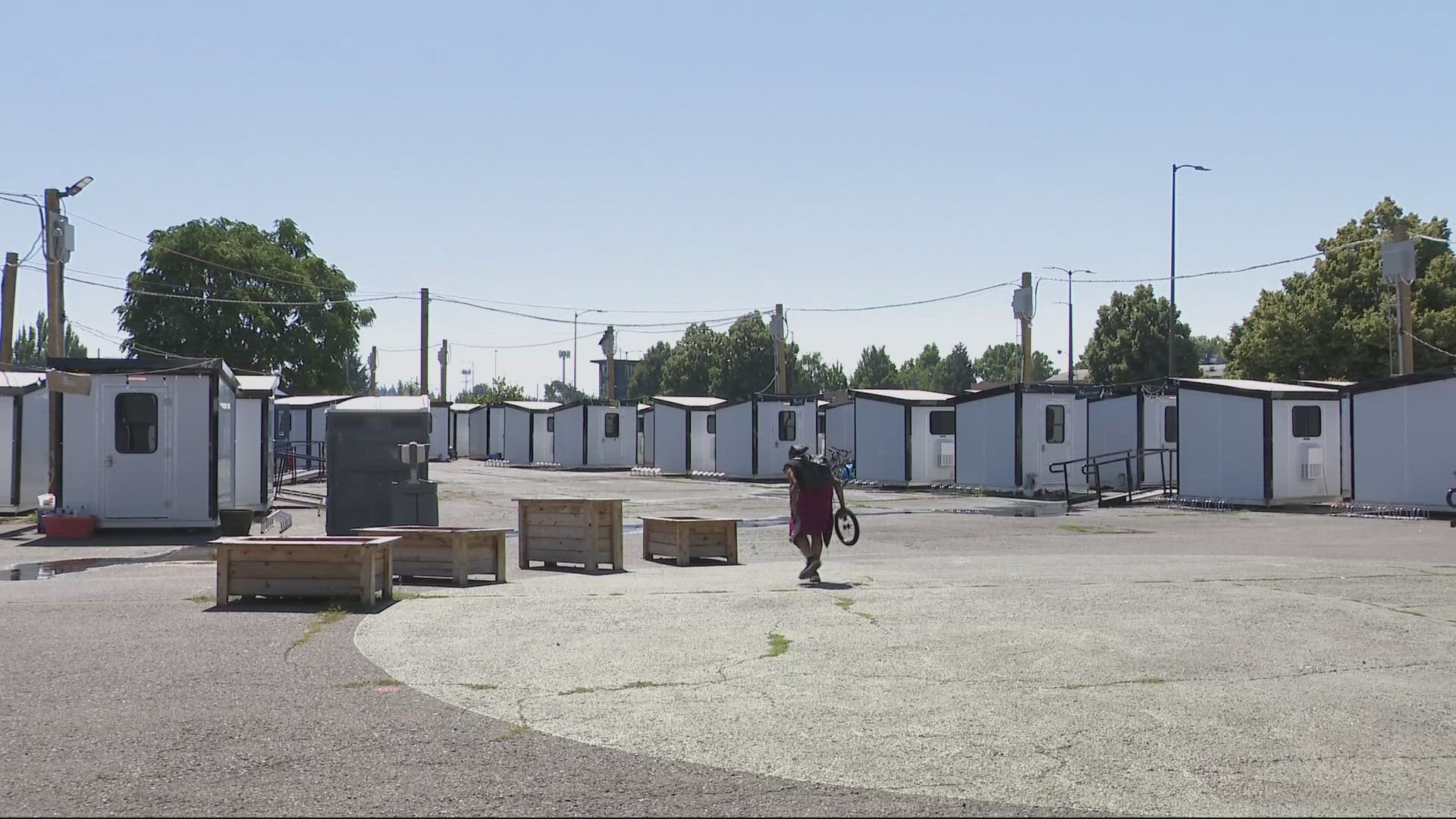PORTLAND, Ore. — In a residential neighborhood off a bustling Southeast Hawthorne Boulevard, a community fights for safety.
They've filled a median with rocks and plants, adding the latest addition Thursday morning: blue signs with white letters reading, in part, "GROWING STRONG SINCE 1925." It’s all to deter homeless people from setting up camp outside their homes.
“It's been a very challenging summer for us on this block in particular,” said Isaac Schmidt, who lives in the neighborhood with his young family. “Almost every day for the past two months, we've had open drug use; we come out of the house, and you can smell fentanyl in the air.”
His children typically walk through the neighborhood to get to the nearby elementary school, which starts next week.
Across the street, 65-year-old Pam Mellinger and her partner try to control an aggressive dog charging at all who pass by.
“There’s a lot more to this homelessness than you realize,” said Mellinger, a recovering heroin addict and new to street life in Portland, which she says does her a disservice when trying to find shelter.
“You need to be referred and to get a referral. If you're like me, and you're new and haven't been homeless a long time, you don't just know this stuff,” Mellinger explained.
Despite the challenges for many people like Mellinger, Multnomah County has helped a record number of people get off the streets and into shelter and permanent housing over the past fiscal year, which runs July 1 to June 30.
In a recent county report, it shows more than 5,000 homeless people moved into permanent housing in the past fiscal year, with more than 7,000 entering shelter. It’s mainly due to taxpayer dollars from the Supportive Housing Services tax allocating millions to homeless services.
For the first time in recent years, the county found a way to spend it all.
“It took us a few years to ramp up the work and get to a point where we can confidently, and most importantly, affectively spend the dollars the taxpayers are trusting us with,” said Dan Field, the director of the county and city Joint Office of Homeless Services. “We're seeing more people move into shelter than ever before. We're seeing people move into permanent housing, and we need to build on that success.”
The county is sending taxpayer money to more nonprofits, including Blanchet House; Rose Haven; and Do Good Multnomah, which runs more than a dozen programs, including tiny home villages and street outreach.
“Without these funds, I can't even imagine where we would be at as a city. We are so very grateful that we have this revenue stream,” Daniel Hovanas, the CEO of Do Good Multnomah, said.
Data shows out of all the homeless people the county housed this past year, 87% stayed in housing for 12 months; the rest went back to the streets.
“Very much, welcome the broader news — we do understand that this is a far-reaching problem, and the long-term solutions aren’t going to come overnight but we also need to be able to live in relative safety,” said Schmidt, who parks his car across the street from his house to stop RVs from moving in.
“We know there's still a crisis on our streets and our communities of homelessness, and this is really just a progress report, not a final report lot of work ahead of us," Field said. "We welcome the public’s scrutiny, we welcome the public’s input, and we’re trying to be as transparent as possible.”

